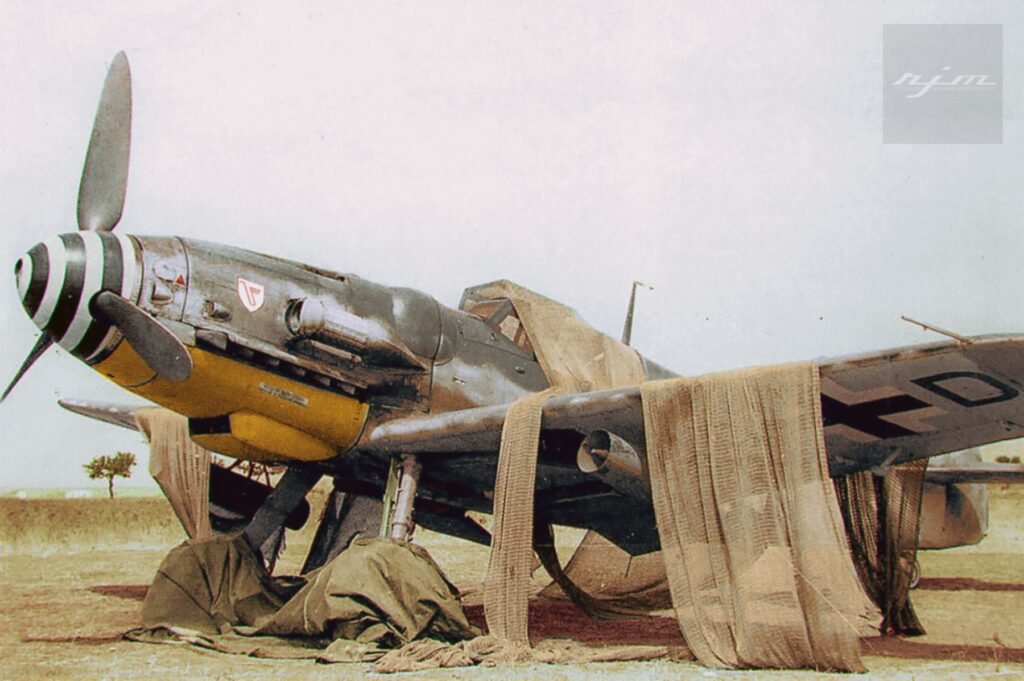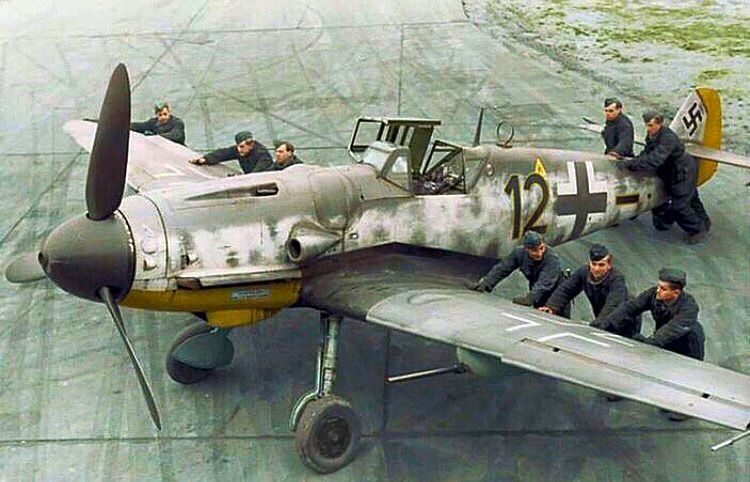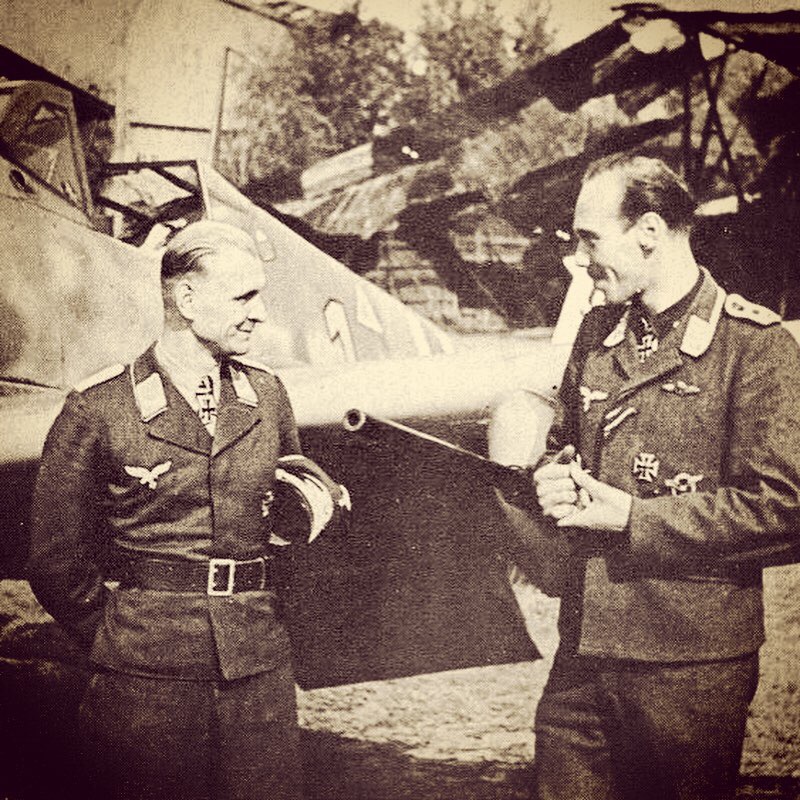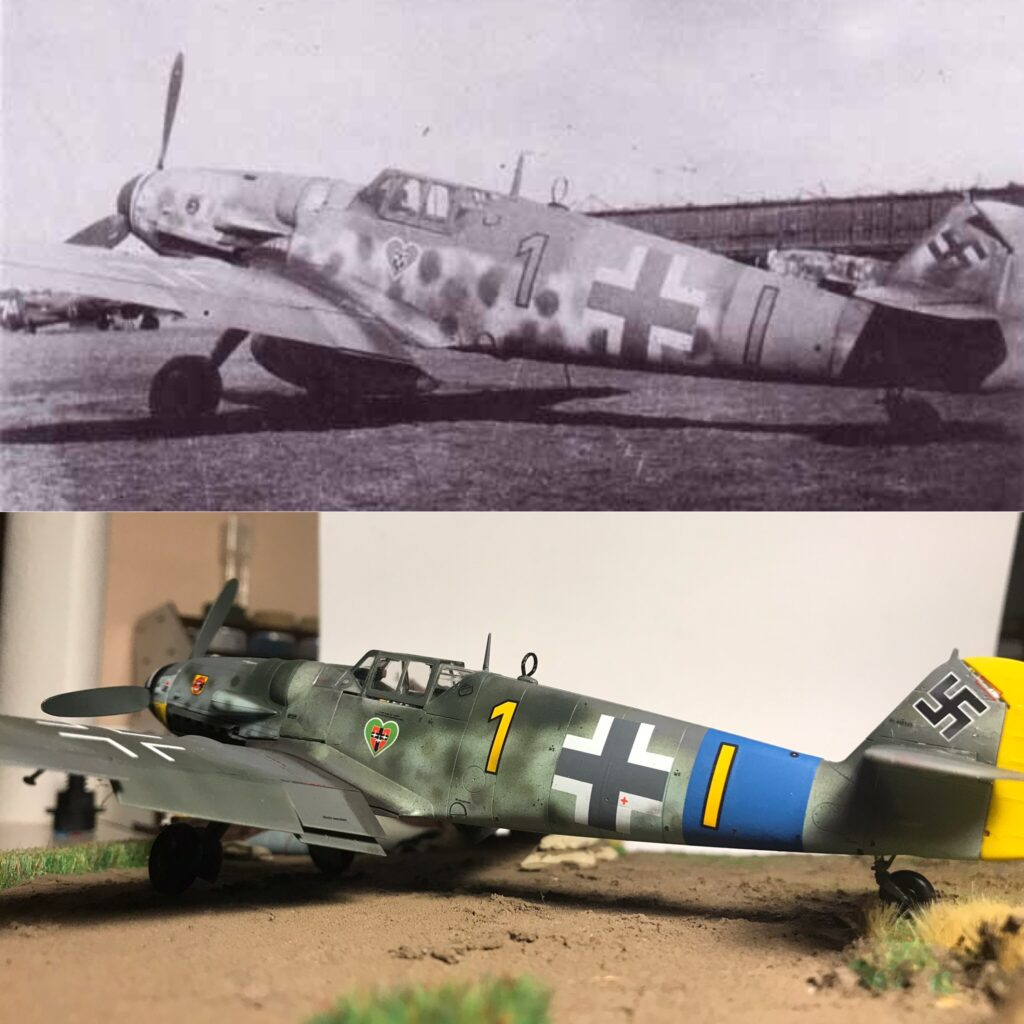
See the scale model of Messerschmitt Bf109 G-6
With a total production run in excess of 30000 aircraft, the Messerschmitt Bf1099 remains the most prolifically-manufactured fighter in history, a fitting title for an aircraft that boasted superlative speed and rate of climb, and achieved significant success against Allied aircraft in WWII.
The Development of the G-6
Those aforementioned Allied aircraft would gain in performance, however, requiring the Bf109 to evolve, and from Spring 1941 development began on the Bf109 G variant, propelled by the bored-out DB605 engine that gave around 10% greater output than its prodecessor. The initial G-1 to G-4 aircraft were armed with a nose 20mm MG151/20 cannon and dual 7.92mm MG17 machine guns, but the latter were replaced with dual 13mm MG131 guns on the G-6 (and G-5, identical but with a pressurized cockpit), in an effort to counter the B-17 bombers used increasingly by the Allies over continental Europe from 1942. A successful design, the G-6 accounted for 13000 of total 23000 Bf109 G variant. One highly recognizable feature of the G-6 is the bulges on either side of the cockpit cowling; known in German as “Beule”, the covered the MG131 machine gun feed tubes.

An Aircraft with Many Faces
Numerous G-6 variants were produced, including camera-equipped G-6/R2 and G-6/R3 reconnaissance models and additionally a G-6/U2 variant which offered improved performance at high altidutes thanks to the GM-1 nitrous oxide injection system.

of 12 Staffel/Jagdgeschwader fitted with 210mm Werfergranaten WGr21 rockets, in San Severo, Italy, July/August 1943.
Copyright by www.colourbyrjm.co.uk – Richard James Molloy
On the G-6/U4, the nose 20mm cannon, with accompanying twin gas canisters at the fuselage rear. G-6/Trop aircraft were designedfor use in the desert climes of North Africa thanks to the addition of sand filters, although the Axis surrender in that theater in 1943 effectively ended demand with just a few hundred made.
Finally, five kits known as Rüstsatze were made available to allow units to modify their aircraft, variously upgrading the Bf109 G-6 with a 300 liter drop tank, gondolas for a 20 mm MG151/20 cannon under each side of the wing, bombs and even radio equipment.

The G-6 in Service
The first Bf109 G6s to see action did so on the Western Front; generally armed under the wings with 20mm cannon or 21 cm rockets, they were tasked with repulsing the waves of bombers coming from the British Isles. As time went on the better armed and armored Fw190 A took on the bulk of the workload, but the G6 performance at altitude remained superior, and it was assigned to support the Fw190 A in higher airspace. While the G-6’s mobility made it a match for the P-38 Lightning, the advent of the P-51 Mustang from 1944 put it firmly on the back foot.
It was a rather different story on the Eastern Front, however, as Soviet fighters were somewhat overmatched against G-6, which enabled it to dominate their aerial clashes. One highly successful unit was Jagdgeschwader 52 (JG52), which was based in the southern sector of Eastern Front , and had around thirty pilots claiming 100 individual victories each, including the three top scoring German aces.

A long production run and numerous variants made the Messerschmit Bf109 one of the most important aircraft in WWII and the period leading up to the conflict. The prolific G-6 dueled with countless foes on both the Western and Eastern Fronts and continued in service through to the end of hostilities.

See the scale model of Messerschmitt Bf109 G-6

Be the first to comment